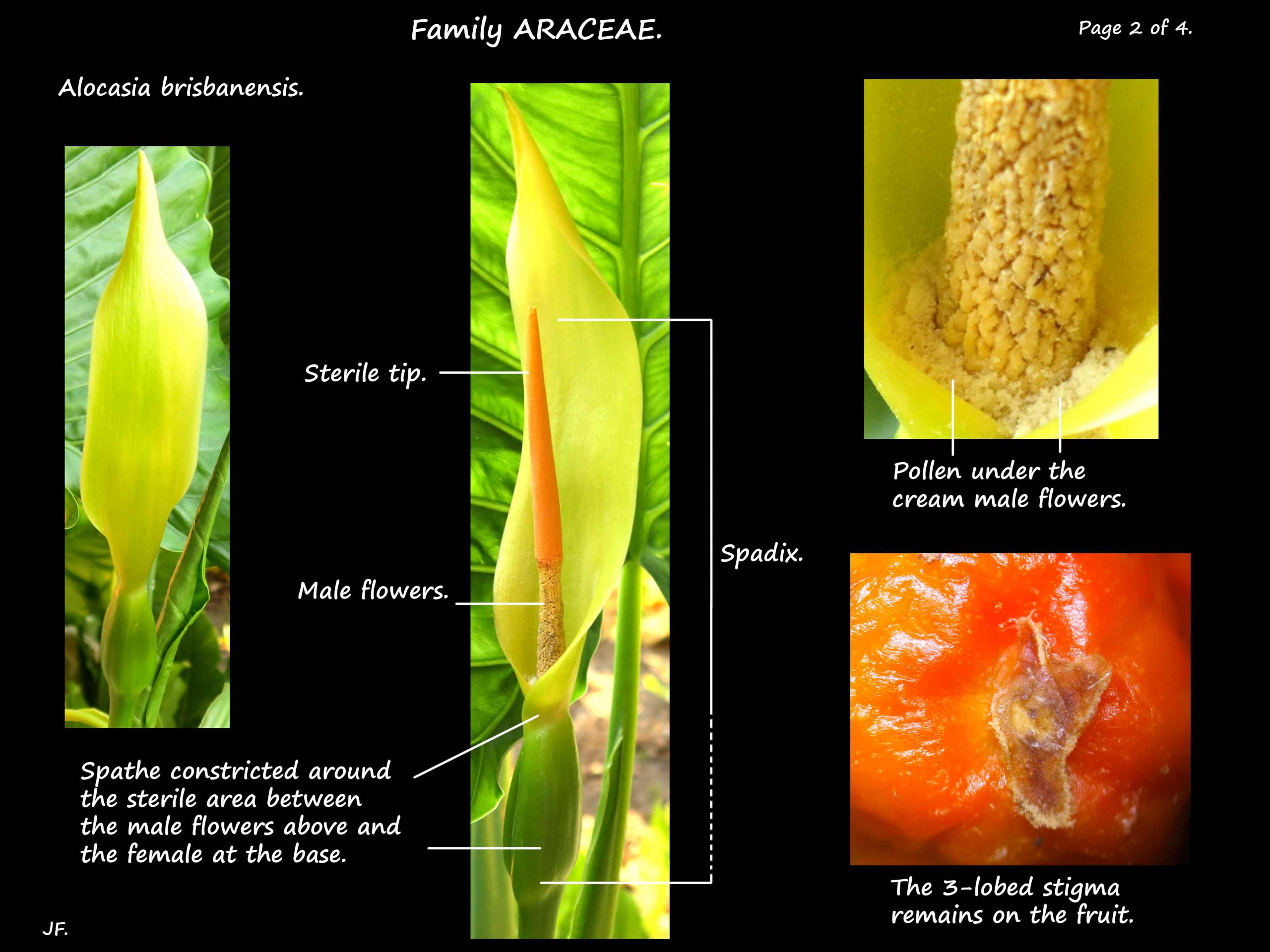Alocasia brisbanensis.
Family Araceae.
Native to S.E. Queensland it is one of about 70 species.
It is very similar to A. macrorrhizos and a synonym is A. macrorrhizos var. brisbanensis.
Commonly known as Cunjevoi it is cultivated as an ornamental but is a weed in some areas.
Large herbs up to around 2 m high.
The thick, fleshy stem may be below or above ground.
Leaves are large with a blade up to 35 cm long on a longer petiole.
The petioles are thick and fleshy with a grooved upper surface.
Their bases sheath the stem.
The base of the glossy, dark green leaves is sagittate – 2 long downward pointing lobes.
Veins are prominent on the paler underside.
Inflorescences are a spike (the spadix) protected by a large bract (the spathe).
Male flowers are above the female ones and separated by a sterile area.
The terminal, dull red, 4 cms of the spadix is also sterile.
The creamish-green spathe is constricted in the area between the male and female flowers.
During pollen release the lower part of the spathe is tightly closed around the female flowers.
After fertilisation the upper parts of the spathe and spadix shrivel up.
The lower part of the spathe remains tightly folded around the developing fruit.
The ovoid fruit, 10 to 15 mm long, mature from green to yellow to red.
There are 1 or 2 seeds in each fruit.
J.F.





